Keywords: GNSS/GPS, Legislation, Reference systems, Crustal
deformation
SUMMARY
Large-scale crustal deformation over a wide area of eastern Japan was
detected by GEONET, Japan's dense Global Positioning System (GPS)
network, following the 2011 off the Pacific coast of Tohoku Earthquake
occurred on March 11, 2011. Since it was assumed that coordinates of the
control points for public surveys, such as GEONET stations,
triangulation stations and leveling bench marks, in a wide area were
greatly changed and could hardly maintain consistency between nearby
stations, the Geospatial Information Authority of Japan (GSI) stopped
providing ‘Survey Results’ of them, which were the coordinates for
survey use, and announced it publicly on March 14, 2011.
In order to promote various public restoration programs in the affected
area, it was strongly required to revise the Survey Results in urgent.
On the other hand, because large postseismic deformation had continued
widely after the event, it was concerned that even if the Survey Results
were updated immediately, they would become unavailable in a short time.
Therefore GSI examined the optimal timing to calculate their new
coordinates by predicting the amount of future postseismic movement
based on the observation data of GEONET stations. Eventually, the new
Survey Results of GEONET stations were published on May 31, 2011 and
those of triangulation stations and leveling bench marks were done on
October 31, 2011 respectively.
In this paper we report the revision process of the Survey Results after
the 2011 Tohoku Earthquake.
1. STAOPPAGE OF PROVISSION OF SURVEY RESULTS OF CONTROL POINTS
The 2011 off the Pacific coast of Tohoku Earthquake (hereafter
‘Tohoku Earthquake’) was such a major seismic event (Mw=9.0) that
occurred at 05:46:23UT and triggered a huge tsunami, causing severe and
catastrophic damages along the coast of Tohoku or Kanto district. On
this event, large-scale crustal deformation was detected by Japan's wide
and dense GPS observation network (GEONET), which had been operated by
Geospatial Information Authority of Japan (GSI) since 1996. The station
”Oshika”, which is located close to the epicenter, was moved about 5.3m
to the east-southeast direction and subsided about 1.2m for instance
(Fig. 1). After the main shock, postseismic deformation has been
continued widely along the Pacific coast area of eastern Japan and local
scale crustal deformations have been observed due to some aftershocks
(Suito et al. [2011a, 2011b]). Under those circumstances, it was assumed
that the Survey Results of control points, which were coordinates for
survey use, were significantly different from their original positions
and should no longer be available for the use for public surveys.
On carrying out the public surveys, precision of the relative position
between nearby control points is crucial in terms of maintaining
consistency. After some previous earthquakes, such as 2003 Tokachi
earthquake and 2008 Iwate-Miyagi earthquake, GSI has examined the area
of stoppage of provision of the Survey Results by calculating the amount
of crustal strain values by earthquake fault models, which were
estimated based on the data from the GEONET stations and determined it
with the criteria approximately 2ppm (equivalent to 2cm per 10km).
According to this policy, we stopped publication of the Survey Results
of the GEONET stations and the triangulation stations of 16 prefectures
on March 14, 2011, immediately after the Tohoku Earthquake. In addition,
the Survey Results of the leveling bench marks were also suspended on
the same day along with leveling routes where estimated vertical
deformation was more than a few centimeters.
In the course of evaluating the recalculated Survey Results of GEONET
stations, it came to light that in addition to 16 prefectures, the
Survey Results of Toyama, Ishikawa, Fukui and Gifu prefectures were also
needed to be updated due to accumulated crustal strain. Therefore, we
additionally stopped provision of the Survey Results of triangulation
stations in these four prefectures on May 31 when the new Survey Results
of GEONET stations, were released. The number of representative control
points, including ones with the suspended Survey Results after the
Tohoku Earthquake is listed in Table 1.
2. REQUIRED ACCURACY AND REVISION DATE FOR THE SURVEY RESULTS OF
GEONET STATION
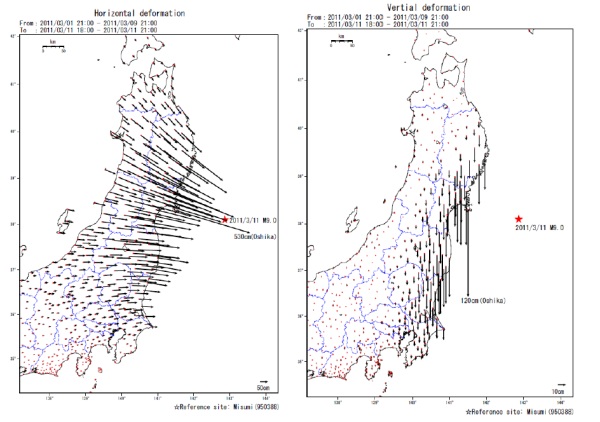
Fig. 1 Crustal movements caused by the 2011 off the
Pacific coast of Tohoku Earthquake
(Left: Horizontal deformation, Right: Vertical deformation)
Table 1 List of the number of control points across
Japan and the number of control points
in 20 prefectures withheld from publication of Survey Results
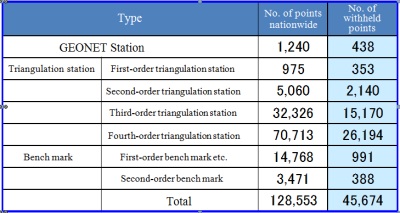
In accordance with the tolerances indicated in the General Standard
of Operation
Specifications for Public Surveys, the accuracy required for calculating
Survey Results of GEONET Stations should be to a point-to-point relative
accuracy of 2ppm.
Since positional data were necessary for restoration/reconstruction of
the disaster-stricken area, and would also be utilized in resurvey of
triangulation stations and public control points, urgent revision of
Survey Results of GEONET stations was required. Meanwhile, to decrease
the effect of postseismic deformation, future deformation was estimated
based on the observation data of GEONET Stations using the approximation
formula with a logarithm function by Marone et al. [1991] as follows:

where c and a are the constants, τlog is the time constant and t is
the time elapsed from the earthquake.
The appropriate time of re-publication of revised Survey Results was
then discussed based on the predicted deformation (Fig. 2). As a result,
we decided that new Survey Results of GEONET stations should be
published by the end of May.
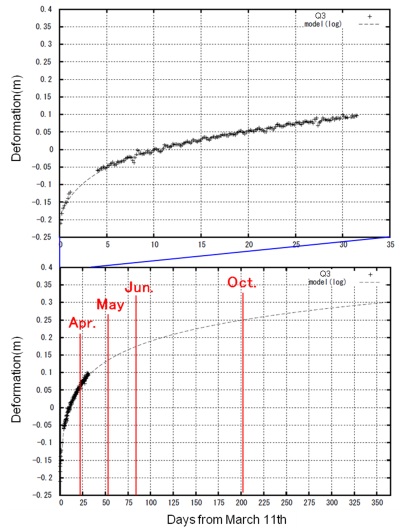
Fig. 2 (Top diagram) Progression of postseismic
deformation observed at the GEONET Station (950167) and (Bottom diagram)
predicted deformation
3. CALCULATION OF SURVEY RESULTS OF GEONET STATION
Conventionally, new Survey Results were calculated based on existing
results. However, since crustal deformation occurred across a large area
due to the Tohoku Earthquake, coordinates that correspond to
International Terrestrial Reference Frame 2008 (ITRF2008) were
calculated based on observation results at the VLBI (Very Long Baseline
Interferometry) station (TSUKUB32) located in GSI, Tsukuba, and GEONET.
These calculated coordinates were then adopted as new Survey Results for
the area where update of Survey Result was required. Existing Survey
Results had remained in western Japan and Hokkaido, where there was less
crustal movement due to the earthquake. We recognized inconsistency at
the boundaries between the existing and updated Survey Results and
corrected them with the model described in 3.1.3 to ensure the required
accuracy for surveys.
3.1 Calculation of survey results based on VLBI and GEONET
3.1.1 Coordinates of TSUKUB32
The coordinate of TSUKUB32 on ITRF2008 was estimated on the analysis
of VLBI observation data of international VLBI session "IVS-R1482",
which was conducted on May 10, to adopt the latest coordinates for the
revision of the Survey Results. We constrained the ITRF 2008 coordinates
of five overseas stations, which were not affected by the earthquake,
and the coordinates of TSUKUB32 were calculated.
3.1.2 Survey Results Calculation Method
The calculation method for Survey Results with observation results of
the VLBI and GEONET is as follows.
- First, the postseismic deformation was calculated from the
difference in averages of R3 solutions at the GEONET Station 92110
(located in GSI, Tsukuba) between May 8-12 and May 22-26. Next, we
calculated the coordinate of TSUKUB32 at 12:00 UTC, May 24 by adding
the postseismic deformation to the coordinate calculated from VLBI
observation at 5:00 UTC, May 10.
- The coordinates (ITRF2005) at 12:00 UTC, May 24 were calculated
by averaging the R3 solution data in May 23-25. Then, we transformed
the reference frame from ITRF2005 to ITRF2008.
- Lastly, we combined (1) and (2) with the collocation result in
2007 (Miura et al. [2009]) and shifted the R3 solutions so that they
were consistent with the coordinate of TSKB based on VLBI. The
shifted R3 solutions (R3’ solutions) were used as new Survey Results
of GEONET Stations that are located in the area for which
publication of Survey Results had been stopped. To obtain the
elevations of them, Japanese Geoid Model 2000 (Nakagawa et al.
[2002]) was subtracted from ellipsoidal heights of each GEONET
Station.
3.1.3 Adjustment Calculations on Boundary Area
Discrepancies across the boundaries of areas with updated Survey
Results and those with no updates had been caused by accumulated crustal
strain since January 1, 1997 - when Geodetic Coordinates 2000 was
published- . Thus, we calculated correction values for the revised
Survey Results so that the amount of discrepancy across the boundaries
became 2ppm or smaller. Since the strait lies between the main island of
Japan and Hokkaido, corrections were applied to only western boundaries
region. The corrections were not applied for the elevations, because
they were confirmed to satisfy the tolerances specified in General
Standard of Operation Specifications for Public Surveys.
The differences between the new Survey Results and previously
established results at each GEONET station are shown in Fig. 3. It
should be noted that the Survey Results mainly around the Tohoku
district had differences as large as 5m whereas the amount of
differences progressively decreased as getting closer to the western
boundary . It was also confirmed that discrepancies observed within the
corrected area were mostly smaller than 2ppm, which would not affect
public surveys in that area.
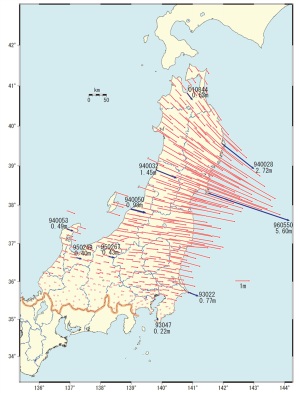
Fig. 3 Differences between before and after the
revision of Survey Results of GEONET stations
(Horizontal deformation)
3.2 Re-publication of Survey Results of GEONET Stations
On May 31, updated Survey Results of 438 GEONET stations were
released, and it became available to carry out public surveys using
GEONET stations in the affected area and its vicinity. On the same day,
publication of Survey Results of triangulation stations installed in
Toyama, Ishikawa, Fukui and Gifu prefectures were stopped.
4. AMEMDMENT OF COORDINATE/ELEVATION OF ORIGINS OF JAPANESE
HORIZONTAL/VERTICAL CONTROL NETWORK
In Article 11 of the Survey Act, it is stated that for basic surveys
or public surveys, the standards for position are that it be represented
by geographical latitude and longitude and height above the mean sea
level. For this, a survey origin for the geographical latitude and
longitude is Nihon Keiido Genten (Origin of the Japanese Horizontal
Control Network) and an origin for the mean sea level is Nihon Suijun
Genten (Origin of the Japanese Vertical Control Network). The position
and coordinate/elevation of the origins are respectively prescribed in
Article 2, Paragraphs 1 and 2 of the Order for Enforcement of the Survey
Act.
Since the positions of the Origins of the Japanese Horizontal and
Vertical Control Network had shifted, resulting in the prescribed
coordinate and elevation being far off the current position after the
earthquake, the coordinate and elevation of those origins were amended
to ensure the accuracy of surveys.
4.1 Amendment of Coordinate of the Origin of the Japanese
Horizontal Control Network
To newly calculate coordinate of the Origin of the Japanese
Horizontal Control Network, Global Navigation Satellite System (GNSS)
observations were conducted between June 21 and 25 at the VLBI marker
for TSUKUB32, which is installed on the GSI in Tsukuba, as well as at
the Origin of the Japanese Horizontal Control Network.
The coordinates of the Origin of the Japanese Horizontal Control Network
newly calculated through these observations and the azimuth from the
Origin of the Japanese Horizontal Control Network to the VLBI marker for
TSUKUB32 are shown in Tables 2 and 3 respectively.
Table 2 Amended coordinates of the Origin of the
Japanese Horizontal Control Network
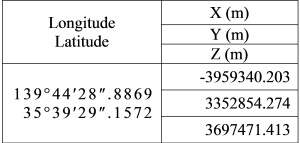
Table 3 Azimuth from the Origin of the Japanese
Horizontal Control Network to the VLBI marker at GSI, Tsukuba

4.2 Amendment of Elevation of the Origin of the Japanese Vertical
Control Network
Sea levels recorded at the Aburatsubo tide station before and after
the Tohoku Earthquake showed that no significant tidal change associated
with the earthquake was observed. Although GPS observations showed that
"P Aburatsubo" (GPS observation point located in the Aburatsubo tide
station site) and the GEONET station "Miura 2" located nearby had sunk
by several centimeters following the March 11 earthquake, the amount of
sinkage tends to decrease with the progress of postseismic deformations.
No significant change in ellipsoidal height was observed between
pre-earthquake (January 2011) GPS observation results and
post-earthquake (July 2011) results in terms of uncertainty of GPS
observations. Therefore, new elevation of the Origin of the Japanese
Vertical Control Network was calculated through the following procedures
(1) and (2) and then verified by the procedure(3).
- When the elevation of the Origin of the Japanese Vertical
Control Network was fixed based on leveling results from the region
between the Aburatsubo tide station and the Origin of the Japanese
Vertical Control Network in January 2011 prior to the earthquake,
the height of the reference point at the Aburatsubo tide station was
determined to be 2.4173m.
- By fixing the elevation of the reference point at the Abratsubo
tide station obtained in (1), the new elevation of the Origin of the
Japanese Vertical Control Network calculated based on leveling
results of July 2011 was determined to be 24.3904m.
- For verification, the elevation of the Origin of the Japanese
Vertical Control Network was calculated based on the results of
leveling between the VLBI marker for TSKUB32 and the Origin of the
Japanese Vertical Control Network with the result of 24.4007m.
With regard to standard deviation of the network adjustment of the
leveling, since the estimated error of +/-0.0026m may be contained in
the results shown in (1) and (2), the newly amended elevation of the
Origin of the Japanese Vertical Control Network should be 24.3900m after
rounding off the ten-thousandth place.
4.3 Amendment of the Order for Enforcement of the Survey Act
Since the coordinate/elevation of the origins of the Japanese
Horizontal/Vertical Control Network were prescribed respectively in
Article 2, Paragraphs 1 and 2 of the Order for Enforcement of the Survey
Act, the order needed to be amended. Also, because Article 11 of the
Survey Act requires Survey Results of control points to be expressed
relative to these origins, the order for enforcement must first be
amended before the Survey Results of control points can be revised.
After being processed through required procedures, a cabinet decision on
the amendment of the Order for Enforcement of the Survey Act was reached
on October 18, 2011, followed by promulgation and implementation on
October 21, 2011.
5. REVISION OF SURVEY RESULTS OF TRIANGULATION STATIONS
To ensure accuracy of the revised Survey Results of triangulation
station, it is desired that surveys are conducted on-site at
triangulation stations. However, in terms of time and cost it is not
always practical to conduct surveys at each and every triangulation
station due to the fact that publication of Survey Results for more than
40,000 triangulation stations was stopped. Since the observed crustal
deformation due to the Tohoku Earthquake was relatively similar in a
wide area, precise geodetic surveys were to be conducted only at a
selected number of triangulation stations - similar to practices
followed after the Tokachi-oki Earthquake in 2003 (Doi et al. [2005]) -
and triangulation stations not targeted for resurvey were to have their
Survey Results recalculated using correction parameters. In addition,
latitudes and longitudes of triangulation stations in the affected 20
prefectures (including Tokyo) for which publication of Survey Results
was stopped were to be revised. Elevations of triangulation stations in
six Tohoku prefectures and Ibaraki also needed to be revised since
significant vertical movements (more than 10cm) immediately after the
earthquake and certain vertical movements due to postseismic crustal
activities were observed throughout the Pacific coast area covering the
Tohoku district and Ibaraki. While conducting triangulation station
surveys and precise geodetic surveys after the March 12 earthquake which
occurred near the boundary between Nagano and Niigata prefectures,
elevations of that area were revised as well.
5.1 Triangulation Station Resurveys
Within the area for which publication of Survey Results was stopped,
precise geodetic surveys were conducted at 595 points. Also, within the
Pacific coast area (close to the epicenter and tsunami devastated
sites), the Nagano-Niigata boundary area and the Hamadori region of
Fukushima where one of aftershocks occurred on April 11, resurvey of
1,272 triangulation stations were conducted.
5.2 Recalculation of Survey Results of Triangulation Stations
Of the triangulation stations not slated for resurvey, 73 stations
had their Survey Results recalculated based on data of previous
observation. For remaining triangulation stations, a new set of
correction parameters were developed and Survey Results of the
triangulation stations were recalculated using PatchJGD, the software
for correcting geodetic coordinates (Tobita, 2009). The number of the
stations recalculated by the software was 41,392.
5.3 Correction Parameters
To recalculate the Survey Results of triangulation stations,
correction parameters for coordinates (horizontal) and elevations were
developed using both previous and revised Survey Results of GEONET
stations and the triangulation stations for precise geodetic surveys.
The correction parameters were constructed by estimating variations at
the southwest corner of a third-order mesh code from displacements of
GEONET stations and triangulation stations using the Kriging method and
were extracted so as to cover the land area.
The constructed parameters were not only used for recalculation of
triangulation stations but were also available to general users for use
in corrections of public control points. For this reason, the
coordinates calculated through the correction parameters were verified
(external evaluation) through comparison with coordinates obtained
through actual surveys.
The verified results showed that deviations of more than 90% of
triangulation stations were within 10cm of the correction parameters for
coordinates and were within 20cm of the correction parameters for
elevations. However, some triangulation stations had discrepancies of
more than 50cm. Since such cases are extremely rare, it was highly
likely that errors took place after obtaining previously established
Survey Results.
It should be noted that exclusions due to it being impossible to check
the accuracy of the correction parameters included the area within a
30km radius of the Fukushima No.1 nuclear power plant, the planned
evacuation zone and regions where crustal deformation due to relatively
large aftershocks following the Tohoku Earthquake occurred as observed
through surveys from GEONET stations and Synthetic Aperture Radar (SAR)
interferometry. The revision of Survey Results for triangulation
stations not slated for resurvey was carried out based on these
correction parameters (Fig. 4 and Fig. 5).
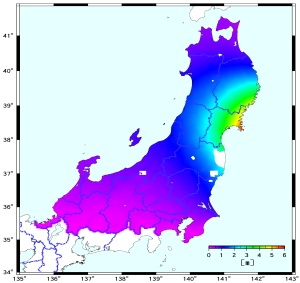
Fig. 4 Correction parameters developed for
coordinates |
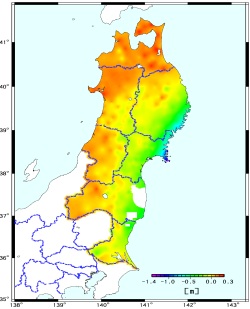
Fig. 5 Correction parameters developed for
elevations |
6. REVISION OF SURVEY RESULTS OF BENCH MARKS
The target accuracy of the correction parameters for elevations used
for the revision of Survey Results of triangulation stations was 10cm to
20cm and those parameters cannot be applied in the revision of Survey
Results of bench marks that requires elevation accuracy of 0.1mm to 1mm.
Therefore, revision of Survey Results of bench marks were, in essence,
to be done through resurvey, and network adjustment with multiple
reference points was calculated based on the updated elevation of the
Origin of the Japanese Vertical Control Network and high-precision 3D
surveys (leveling) conducted in the Tohoku and Kanto districts.
When calculating network adjustment, it was essential to minimize the
impact on areas that do not include resurvey-slated leveling routes so
as to ensure a certain degree of accuracy. To do so, network adjustment
had to be calculated by designating multiple bench marks that were not
affected by the earthquake as reference points. The reference points
were determined, after discussion, to be the first-order bench mark
5527-2 located in Ninohe of Iwate as well as the Origin of the Japanese
Vertical Control Network.
Revised Survey Results of bench marks obtained by network adjustment
calculations based on these two reference points were released on
October 31. Fig. 6 shows the difference between the revised Survey
Results and the Geodetic Coordinates 2000 (vertical).
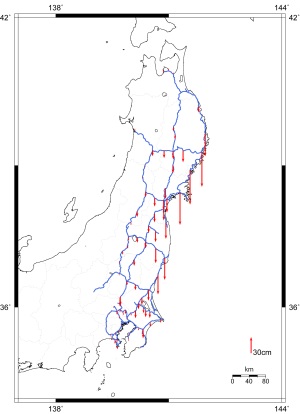
Fig. 6 Amount of displacement between revised Survey Results and the
Geodetic Coordinates 2000 (vertical)
7. CONCLUSION
Following the earthquake off the Pacific coast of Tohoku, notable
crustal deformation occurred over a wide area of eastern Japan, which
led to the stop of publication of Survey Results of GEONET stations and
triangulation stations in 16 prefectures and Survey Results of bench
marks from the Tohoku and Kanto districts on March 14, 2011 (with
addition of several areas on May 31).
In order to contribute to swift restoration/reconstruction of the
disaster-stricken area, and to ensure stable provision of Survey Results
for many years to come, the amount of future deformation was estimated
by taking postseismic deformation monitored by GEONET stations into
account and, after discussions with regard to an appropriate time for
re-publication, revised Survey Results of GEONET stations were released
on May 31.
Precise geodetic surveys were conducted at some of triangulation
stations, and Survey Results for the remaining triangulation stations
were revised through calculations based on the correction parameters.
The revision of the Survey Results of bench marks was, in essence,
achieved through resurvey. High-precision 3D surveys were conducted in
the Tohoku and Kanto districts and network adjustment was calculated
based on the revised elevation for the Origin of the Japanese Vertical
Control Network.
The revised Survey Results of triangulation stations and bench marks
were released on October 31. Because the coordinates/elevations of the
origins of the Japanese Horizontal/Vertical Control Network were
updated, and because Survey Results were revised across a wide area of
eastern Japan, the revised Survey Results of GEONET stations,
triangulation stations and bench marks across Japan were re-named with
the following title to make users aware of the changes: "Geodetic
Coordinates 2011."
REFERENCES
DOI Hiromitsu, Toshihiro YAHAGI, Yasutomo SHIRAI, Mitsuo OHTAKI,
Tadashi SAITO, Toshihiro MINATO, Hiromi CHIBA, Takehisa INOUE, Katsuki
SUMIYA, Jun SUGAWARA, Yoshiyuki TANAKA, Hiroaki SAITA, Hideki KOJIMA,
Toru YUTSUDO, Tomomi AMAGAI, and Masao IWATA (2005): The Revision of
Geodetic Coordinates of Control Points Associated with the Tokachi-oki
Earthquake in 2003, Journal of the Geospatial Information Authority of
Japan, 108, 1-10. (Japanese)
Marone, C. J., C. H. Scholtz and R. Bilham (1991): On the Mechanics
of Earthquake Afterslip, Journal of Geophysical Research, 96, B5,
8441-8452.
MIURA Yuji, Kenji YOSHIDA, Kyoko KOTANI, Shinobu KURIHARA and Satoshi
KAWAMOTO (2009): VLBI-GPS Co-location Survey, Journal of the Geospatial
Information Authority of Japan, 119, 71-85. (Japanese)
NAKAGAWA Hiroyuki, Kojin WADA, Tadayuki KIKKAWA, Hisao SHIMO, Hisashi
ANDOU, Yuki KUROISHI, Yuki HATANAKA, Hiromi SHIGEMATSU, Kazuyuki TANAKA,
Yoichi FUKUDA(2003): Development of a New Japanese Geoid Model,
“GSIGEO2000”, Bulletin of the GSI, 49, 1-10.
SUITO Hisashi, Takuya NISHIMURA, Shinzaburo OZAWA, Tomokazu
KOBAYASHI, Mikio TOBITA, Tetsuro IMAKIIRE, Shinichiro HARA, Hiroshi
YARAI, Toshihiro YAHAGI, Hisao KIMURA and Satoshi KAWAMOTO (2011a):
Coseismic Deformation and Fault Model of the 2011 off the Pacific coast
of Tohoku Earthquake, Based on GEONET, Journal of the Geospatial
Information Authority of Japan, 122, 29-37. (Japanese)
SUITO Hisashi, Takuya NISHIMURA, Shinzaburo OZAWA, Mikio TOBITA,
Shinichiro HARA, Hiroshi YARAI, Toshihiro YAHAGI, Hisao KIMURA and
Satoshi KAWAMOTO (2011b): Postseismic Deformation and Postseismic Slip
Model Following the 2011 off the Pacific coast of Tohoku Earthquake,
Based on GEONET, Journal of the Geospatial Information Authority of
Japan, 122, 39-46. (Japanese)
TOBITA Mikio (2009): PatchJGD, Software for Correcting Geodetic
Coordinates for Coseismic Displacements, Journal of the Geodetic Society
of Japan, 55, 355-367. (Japanese)
CONTACT
Atsushi Yamagiwa
Geospatial Information Authority of Japan
Kitasato 1
Tsukuba City, Ibaraki Pref., 305-0811
Japan
Tel. + 81-29-864-4719
Fax + 81-29-864-1802
Email: yamagiwa@gsi.go.jp
Web site:
http://www.gsi.go.jp/ENGLISH/index.html

































